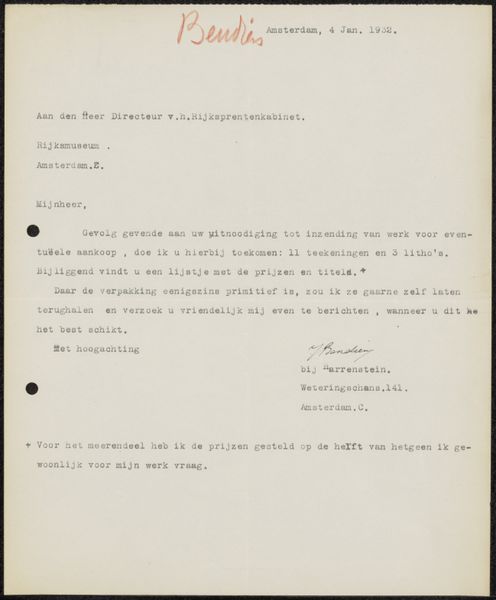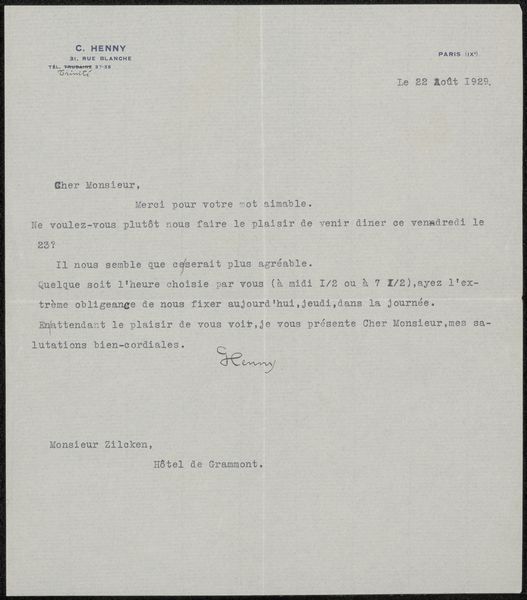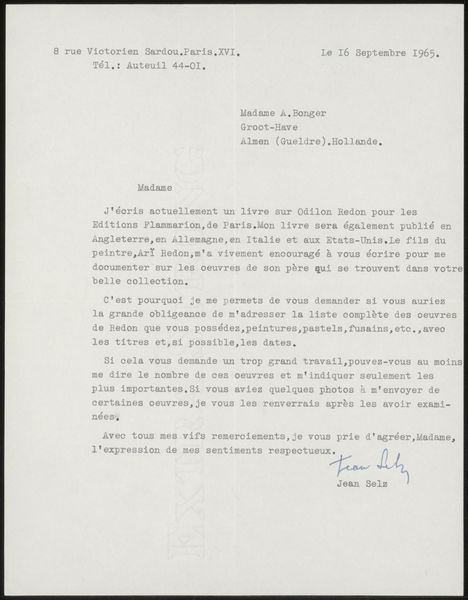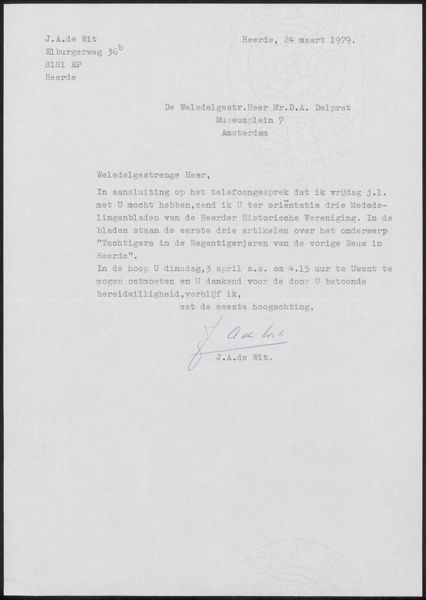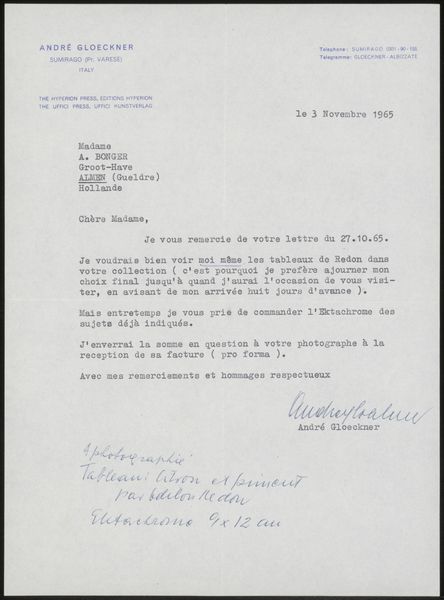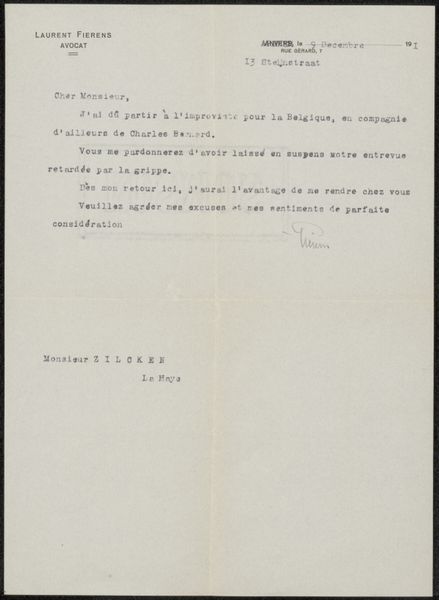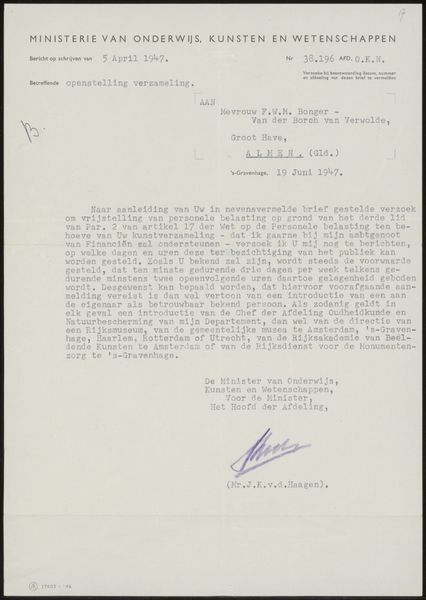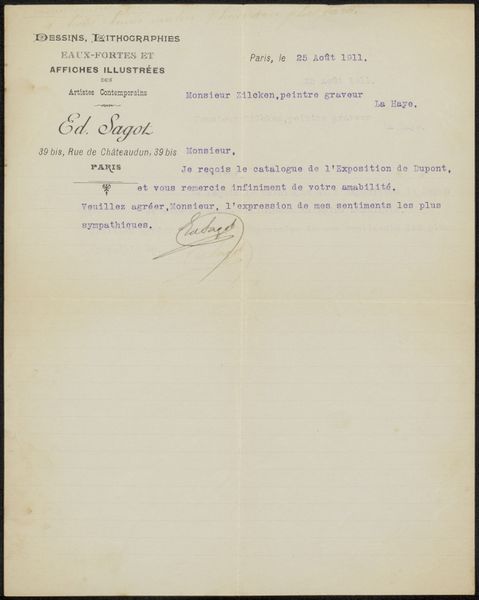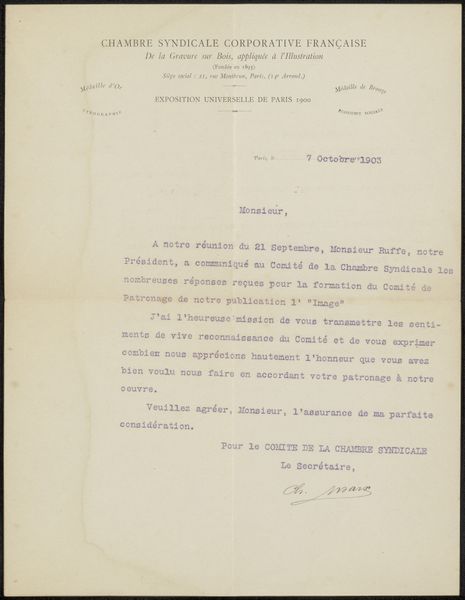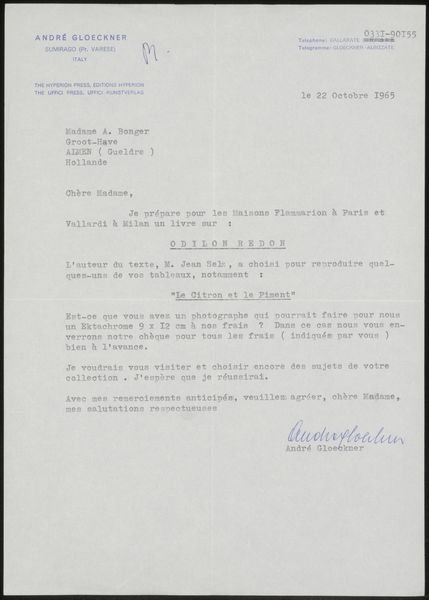
print, paper, typography
# print
#
paper
#
typography
Copyright: Rijks Museum: Open Domain
Curator: Here we have a letter, "Brief aan Philip Zilcken," possibly from 1928. It's a print on paper featuring typography, issued by J.H. de Bussy, a publishing house in Amsterdam. The letterhead itself offers a kind of micro-study in design. Editor: It strikes me as surprisingly formal. The type is clean, precise, yet the message – judging from what little Dutch I can decipher – sounds rather...disappointing. Is it a rejection? Curator: Essentially, yes. The letter informs Philip Zilcken that his article, likely submitted for publication in "Maandblad voor Beeldende Kunsten"—a monthly magazine for visual arts—has not yet been accepted but might appear in a future issue. Editor: So it's an artifact of the publishing process, a paper trail from the art world's circulatory system. The letterhead details the infrastructural supports for disseminating creative works. I imagine all those different departments handling different aspects of publishing--correspondence, sales, editorial direction. Each contributes to constructing cultural value. Curator: Precisely. Think about the paper quality, the typeface chosen, even the layout of the address at the top. It projects a sense of establishment and reliability, doesn't it? Bussy isn't some fly-by-night operation. They’re invested in appearing authoritative. Editor: The fact it is printed also signifies a conscious effort to refine visual communication and streamline production. Before computer type, typography played a key role in creating social identity and enforcing authority. Curator: I agree. Consider also Zilcken’s position as a potential contributor, seeking validation from a respected publication. This letter documents the power dynamics within the art world – who gets to decide what is seen and who gets overlooked. Editor: A small, fragile object, but packed with information about labor, authority, and the socio-economic networks that filter creativity. You realize how easily individual voices can be caught within institutional machinations. Curator: It makes me ponder the fate of Zilcken's "Les Colombières" article. Did it eventually get published? Did it ever see the light of day? The letter is but a fragment, leaving so much unsaid and unknown. Editor: Yes. It encourages reflection, acknowledging historical currents that ripple through this simple sheet. I find myself pondering unseen power relations.
Comments
No comments
Be the first to comment and join the conversation on the ultimate creative platform.
